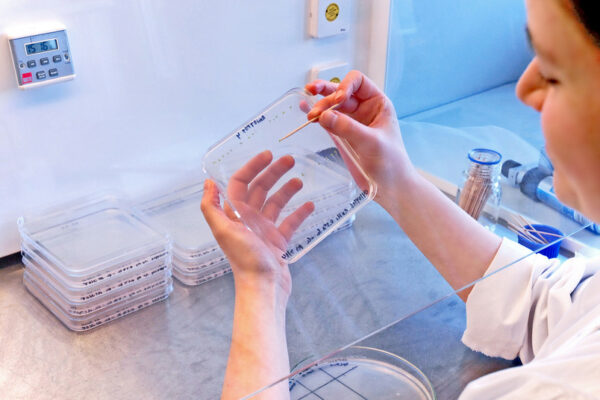The protein SPL7 regulates nutrient uptake from the soil, as known before. Now it emerges that this protein also plays a role in a completely different context.
To carry out their functions in the cell, many proteins require the chemical properties of bound metals such as copper. If this nutrient is in short supply, plants respond by enhancing its uptake and by replacing some copper-utilizing proteins by copper-independent proteins. Squamosa promoter binding protein-like 7 (SPL7) mediates this response. Researchers at Ruhr-Universität Bochum (RUB) have now discovered that SPL7 is also indispensable for plant energy metabolism.
This is the conclusion of a team headed by Professor Dr. Ute Krämer from the Department of Molecular Genetics and Physiology of Plants at RUB, together with colleagues from the Max Planck Institutes for Plant Breeding Research in Cologne and for Molecular Plant Physiology in Potsdam, in the journal “The Plant Cell”, published online on July 2022.
Plants use light energy to produce sugar from carbon dioxide and water in photosynthesis, which gives rise to a variety of energy-rich compounds that are the basis of all life on Earth. “This study has improved our understanding of how plants control their sugar balance, which may be useful for the development of new plant-based biotechnological processes,” points out Ute Krämer. “The findings could also help to increase agricultural yields in copper-deficient soils.”
Blind to their own energy status
The researchers studied mutants of the model plant Arabidopsis that are unable to produce the protein SPL7. Poor utilization of sugars in these mutants led to the accumulation of sugars in their tissues. Although they had a lot of sugar, i.e. a lot of energy, at their disposal, their growth and development was slow. “We suspect that mutants lacking SPL7 are impaired in recognising their high energy status or in translating it into adequate growth responses,” concludes Krämer.
Unidentified signalling pathways may be involved
The study suggests that SPL7 has a regulatory function in plant energy metabolism, in addition to switching on the copper deficiency response. This newly discovered regulatory link reflects that crucial protein functions in energy metabolism are copper-dependent, both in photosynthesis of land plants and in respiration. The best-studied plant sugar signalling pathways were found to function normally in the SPL7 mutants so that a yet unidentified pathway may be involved.
In follow-up studies, the researchers plan to explore how SPL7 enables plants to utilise sugars. The first step in this direction has already been completed. The research team identified all genes whose activity is directly regulated by SPL7. In the future, the research group plans to address how some of these genes enable the utilization of sugars.
Read the paper: The Plant Cell
Article source: Ruhr-Universitaet-Bochum
Author: Julia Weiler, translated by Donata Zuber
Image: Work in the lab begins with these tiny Arabidopsis seedlings. Credit: RUB, Klaus Hagemann








